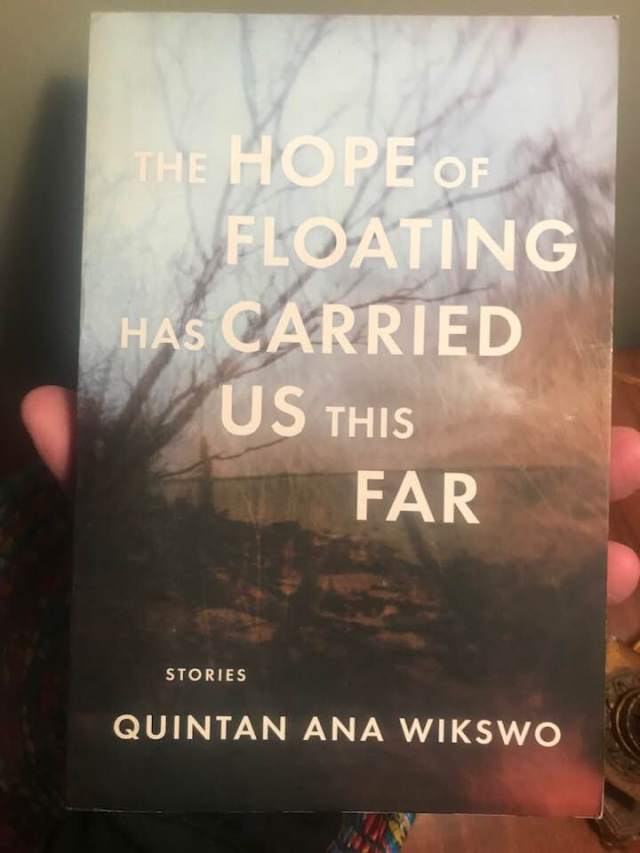Hello, Story366!
Okay, Sickpocalypse has come full circle, finding its way to me today. Last night, I was pretty wiped out while writing my post on Virginia Pye. What I found out later was that this unusual exhaustion was just the start of something wicked a-brewing. By the time I woke up this morning at six to get the oldest boy off to school, I was full-blown Bleh. The Karen was up in Jefferson City, interviewing the governor or something, so I was in charge of the other boy, too. I went back to bed, got up with him at the last possible second, and ushered him off for his daily public education. Then I slept a lot. Got sick a lot. Wandered to my office and didn’t accomplish much. The boys got picked up and are home. Right now, I have a fever and the chills. Karen is back and just ordered a pizza because her rewards expire today so a pizza is on its way. I haven’t eaten in over a day and can’t imagine eating any Pizza Hut now. We’ll see what happens when it gets here.
I really want to put some thoughts down about Kobe Bryant and the Cubs, as people spoke to me, at length, about each topic today. I just sort of sat there. The important thing is, I’ll either A) get to it, or B) the moment has passed and I won’t. Thus is the beast that is Story366.
Like last night, the highlight of my day was stretching out on the couch and reading from my book of the day. Today I chose Anne Elliott‘s collection, The Artstars, out last year from Blue Light Books as winner of their Blue Light Books Prize.
Seems like before in my life, when I was sick, reading would put me right to sleep. Honestly, when I opened Elliott’s book and saw the first story, “Light Streaming From a Horse’s Ass,” was twenty-seven pages long—with tiny type, to boot—I fully suspected that I wouldn’t make it through, that someone from my family would find me out out, the book on the floor and a cat or two sleeping on my person. As it turns out, “Light Streaming From a Horse’s Ass” captivated me from the start and I ate that story right up, then moved on to more. This first piece paints a memorable image right away, a taxidermied horse lying in the bed of a pickup truck in a parking lot on the line between Brooklyn and Queens. The narrator spies it on the way up to her photography studio, which is actually her apartment—it’s a commercial building and she’s not supposed to be living there. She’s not the only one pulling this charade, however, as the building is littered with starving artists, including another photographer and a trapeze troupe. Elliott swarms her story with details, making entry into this world more and more appealing with every page.
Our protagonist (in second person by the way), Maddie, is 25 and trying to make a go of it as an artist. To make rent—which she doesn’t make—she take headhots, three hundred bucks a pop, which keeps her alive, living without power (and therefore heat), eating rice with sugar in it to keep her calories up. The other artists in the building—that photographer, Fritz, and the trapezers—seem to be making a better go of it than she is, so she bums food off of them, as well as film and paper and booze. One recent client, a Buick-chinned actor named Paul, has given her a fifty-dollar advance, just so she can print out his headshots. He also gives her the fruitcake and cheese-and-sausages his family sent him for Christmas, Maddie’s stomach growling throughout their shoot.
Oh, and that horse? The guy who had it in his truck turned out to be a set designer and needed to get rid of it, the horse having seen better days. Maddie adopts the horse, takes it up to her office/home, and sets it up by the window. Here we get the titular moment, Maddie first peering inside a hole where the tail used to be—think of that image—then later admiring the light pour out that same hole, captivated by its odd beauty.
Because Elliott’s a good writer, she gets all of these interesting people in the same place, the most interesting of the settings: the trapeze artists’ apartment. Paul—whom Maddie has dubbed Dudley because of his resemblence to Dudley Do-Right—arrives with booze and more food, mostly to see one headshot that Maddie is particularly fond of. Maddie, in fact, thinks this is the photo, the one she’s been waiting for since coming to New York. She is sure Paul/Dudley will get work because of it. Maddie’s so sure, so convincing, I pictured Dudley landing a Law & Order episode the very next day.
(I just ate some pizza.)
Eventually, all these oddballs in an odd space, juiced by good booze, create chaos, gorgeously rendered chaos Maddie doesn’t want any part of. She’s stoked by the Paul photo, just when she thought about giving up for good and becoming a CPA. How she just wants to take pictures, create art. Paul/Dudley follows her up to her place and assists in the makeshift darkroom, and from there … that’s all I’m going to reveal here. What I’ll say is that Maddie’s moment of inspiration, this glimpse at her own potential, motivates her to the story’s end, producing more great images, from both Maddie and Elliott.
Other stories in Artstars focus on artists as well. The next piece in the book, “Three Lessons in Firesurfing,” focuses on another artist conclave, this a group of graduate students at a Midwestern art school. Our hero here is Sara, focusing on a textiles, just trying to prove she belongs The next piece, “Aquaria,” features an artist’s statement and some captions by one of the secondary characters in “Three Lessons in Firesurfing,” a sculptor who works exclusively in the medium of her own used tampons. Artstars is about art stars, or at least people trying to be, and Elliott seems to nail that feeling of community and desperation way better than anything in, say, Rent (I like that musical, but God, those people are terrible fucking artists). The fact Elliott has worked as a sculptor, costume stitcher, and bookmaker (according to her bio) doesn’t surprise me at all. My bet is, she’s lived this life.
“Light Streaming From a Horse’s Ass” read more like three pages than twenty-seven, as I enjoyed embroiling myself in these artists’ lves. The fact Anne Elliott has worked as a sculptor, costume stitcher, and book artist (according to her bio) doesn’t surprise me at all. My bet is, she’s lived this life. Or she’s great at faking it.











